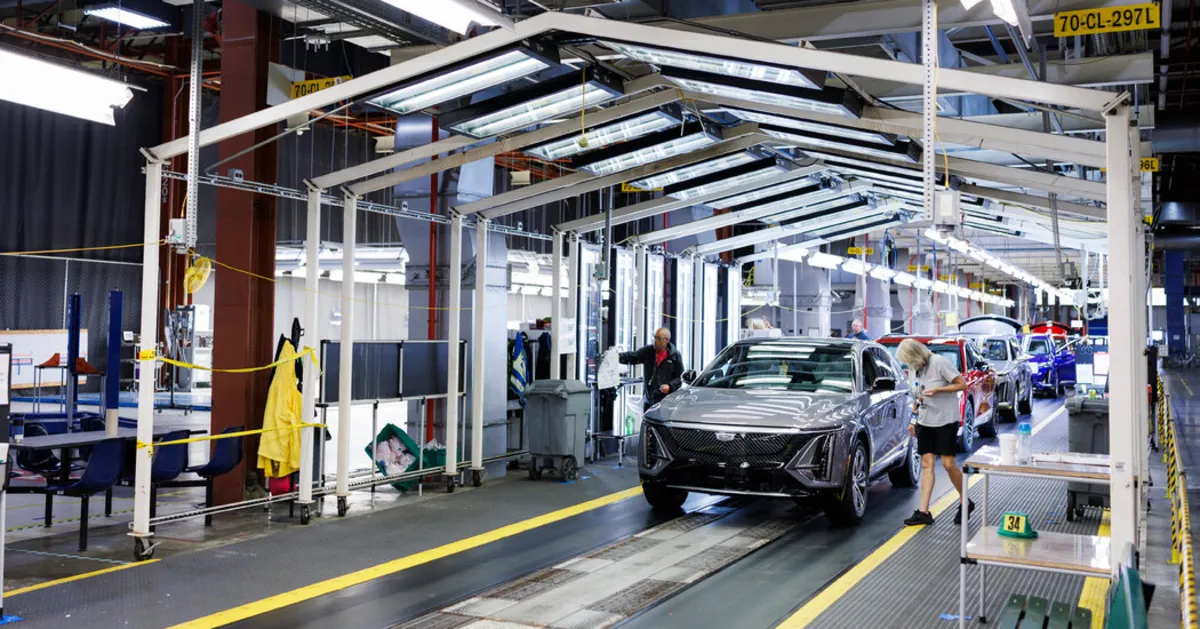
The recent data from the Bureau of Labor Statistics indicates a slight dip in the core measure of inflation, which excludes the often volatile prices of food and fuel. This index observed a modest increase of 0.2 percent compared to the previous month and a year-over-year rise of 3.1 percent. Both figures are below the increase recorded in January, highlighting the bumpy progress the Federal Reserve (Fed) is making towards its 2 percent inflation goal.
While prices for essential consumer staples, such as eggs and grocery items, have surged, costs in other categories, notably gasoline, have experienced a decline. This inconsistent pricing landscape has raised concerns among economists regarding the potential impacts of tariffs imposed by President Trump and the ongoing global trade war. These trade tensions could not only elevate prices but also hinder economic growth.
Recent surveys from the Federal Reserve Bank of New York reveal a significant decline in consumer confidence. Expectations regarding financial outlook over the next year have worsened, with a notable increase in the number of consumers anticipating a decline in their financial situation. This sentiment aligns with the prevailing inflation rate of around 3.1 percent, which consumers now view as a persistent threat. The average perceived likelihood of missing future debt payments has surged to levels not seen since April 2020.
The combination of slowing economic growth and rising price pressures presents a complex challenge for the Fed. As of January, officials felt justified in postponing interest rate cuts due to the economy's resilience. However, if signs of weakness appear before inflation is adequately controlled, the Fed's options may become restricted. In 2019, during a similar trade war scenario, the Fed reduced interest rates by a total of 0.75 percent to safeguard the economy from further weakening.
Jerome H. Powell, the Fed Chair, has acknowledged the current economic landscape as distinct from previous circumstances. He stated, “We came off a very high inflation and we haven’t fully returned to 2 percent on a sustainable basis.” Powell highlighted that while the Fed typically overlooks one-time price hikes due to tariffs, they are closely monitoring any long-term shifts in inflation expectations.
In the Asian markets, indices in Japan, South Korea, and Taiwan showed slight gains, reflecting their susceptibility to President Trump's tariff expansions. Conversely, Hong Kong's Hang Seng Index fell nearly 1 percent, marking its fourth consecutive day of losses. As global markets fluctuate, the European Union has announced retaliatory tariffs in response to Trump's 25 percent duties on steel and aluminum imports, labeling them as “unjustified.”
The recent waves of selling have left the S&P 500 index approximately 10 percent below its mid-February peak, inching closer to a market correction. Alan McKnight, chief investment officer at Regions Bank, remarked, “Uncertainty breeds volatility.” The CBOE’s VIX volatility index, a measure of market fear, has risen, indicating heightened investor apprehension about future economic conditions.
As trade tensions escalate, foreign investors are becoming more cautious, particularly concerning U.S. trade policies. Khoon Goh, head of Asia Research at ANZ, noted that concerns over tariffs' impact on U.S. growth are affecting Asian equities. Australian stocks have also faced declines, following the U.S. government's firm stance on steel and aluminum tariffs without exemptions.
The European Union has prepared to implement a two-part response to U.S. tariffs, reinstating previously suspended tariffs on various goods effective April 1, and planning to introduce additional tariffs on approximately €18 billion worth of products. This response aims to match the economic impact of U.S. tariffs on European economies, highlighting the escalating trade conflict.
The EU's leaders have expressed concern that tariffs could lead to economic harm for both parties involved. Ursula von der Leyen, president of the European Commission, emphasized the detrimental effects of tariffs, stating, “Jobs are at stake, prices up, nobody needs that.”
The current trade policies under the Trump administration have raised questions regarding their long-term effectiveness. The application of tariffs on metals has rekindled trade disputes, with Canada and other countries vowing to retaliate. The uncertainty surrounding these policies has left many countries, including European nations, attempting to decipher the U.S. administration's objectives.
Industry experts are concerned that the tariffs could drive up costs across various sectors, impacting more businesses than they help. The American Iron and Steel Institute has noted that while tariffs have benefitted the steel and aluminum industry, the increased costs of these metals may discourage manufacturers who employ a larger workforce.
As tariffs raise production costs, manufacturers may pass these expenses onto consumers, leading to higher prices for everyday goods. The economic landscape remains precarious, with increased inflation expectations potentially complicating the Federal Reserve's ability to stimulate growth through interest rate cuts.
As the U.S. economy grapples with the dual challenges of inflation and trade tensions, both consumers and businesses face a landscape fraught with uncertainty. Policymakers must tread carefully to balance the need for economic stability while addressing the complexities introduced by tariffs and other trade measures. The evolving situation necessitates a keen focus on consumer sentiment and market reactions as we move forward.